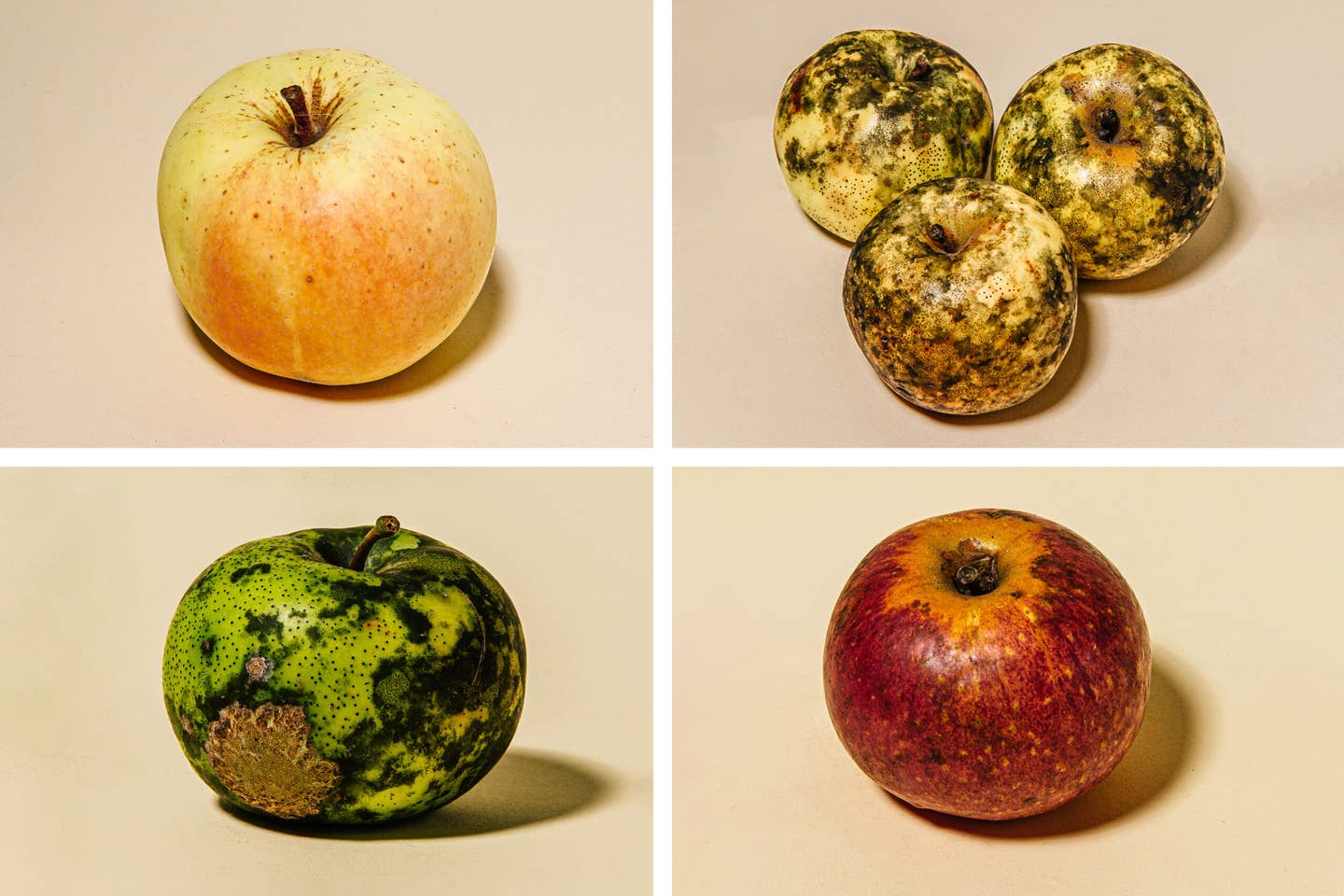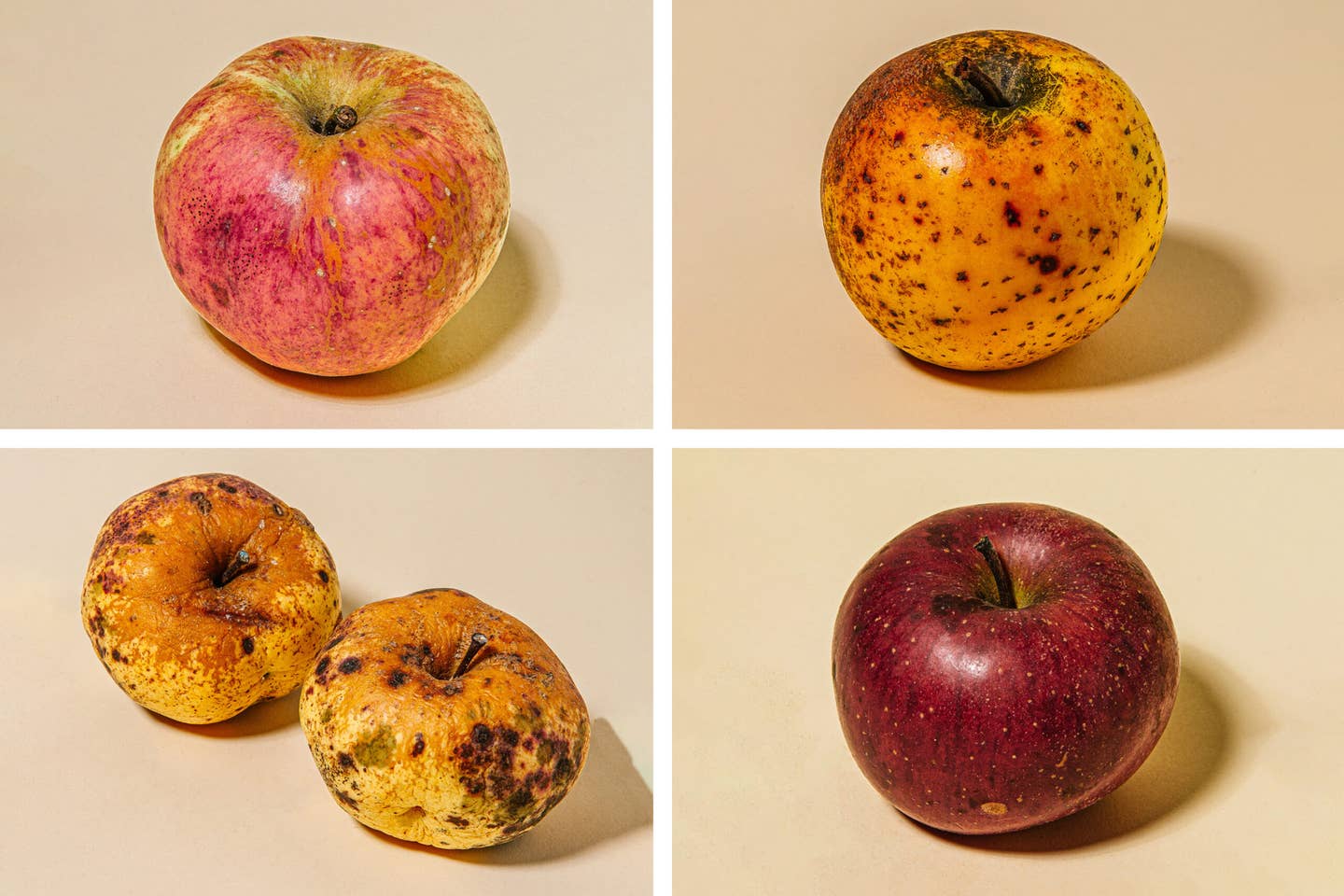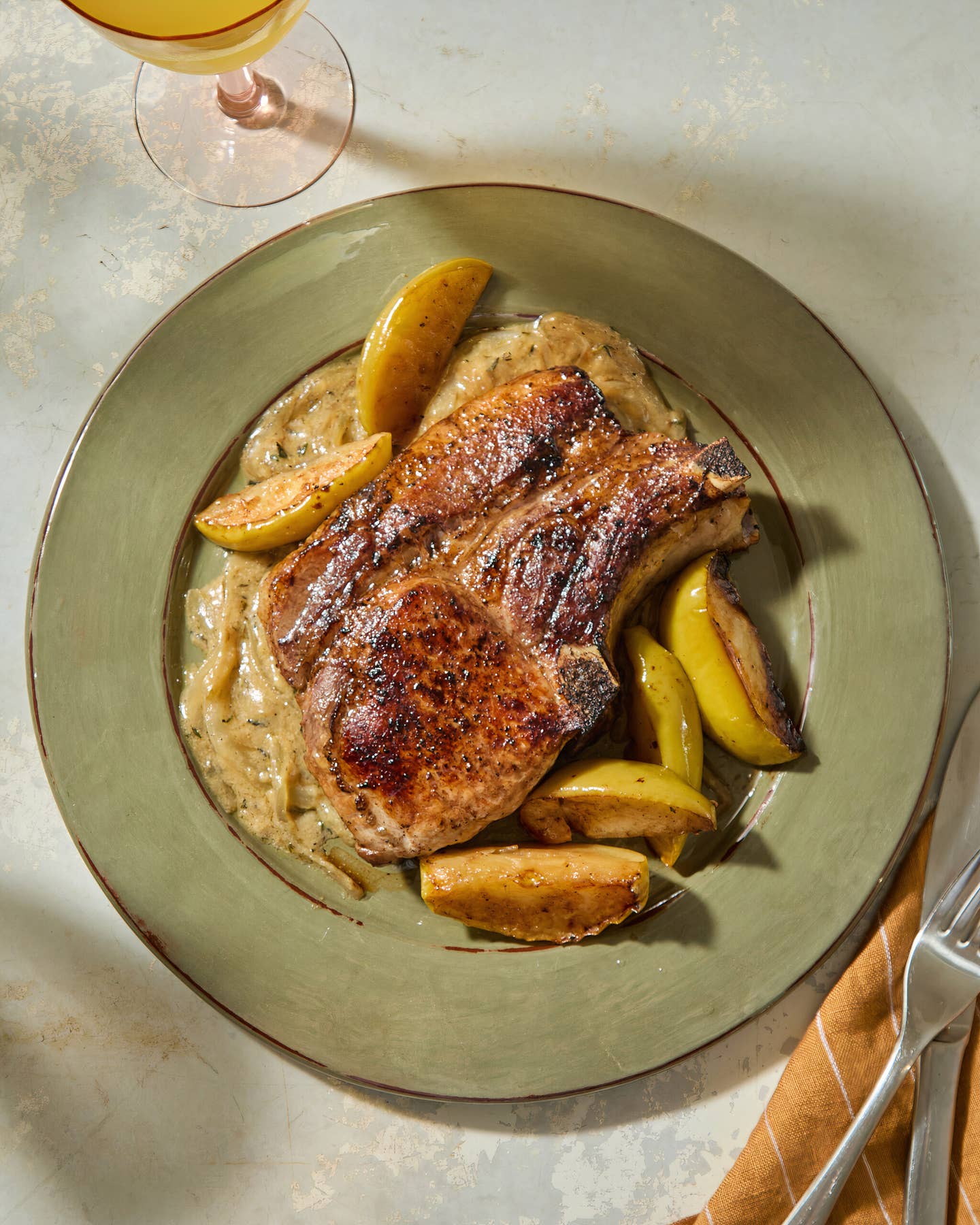The pores and skin of the primary specimen—dubbed “Lemongrab,” from Warren, Vermont—is electrical yellow with a hazy glow, virtually as if lit from inside. Pomologists, scientists who examine the cultivation of fruit, name this irregularity scarf pores and skin: The apple’s dermis has separated barely from its flesh, permitting gentle to refract within the areas between. The impact is otherworldly; the fruit resembles a tiny planet, its whorls and flecks shifting like atmospheric storms.
“Denbow Etoile,” “Bowdler Bitter,” and “Tonguelasher” are subsequent on the desk, three of the 160 wild apple varieties on show at Matt Kaminsky’s annual Pomological Exhibition in Williamsburg, Massachusetts. Every entry is diced and displayed on a paper plate alongside toothpicks for sampling. Pens and paper are offered for guests to jot down their tasting notes. Observations run the gamut from the traditional (“musky,” “acidic,” “honeysuckle”) to the weird (“ashtray,” “hairspray”) to the downright confrontational (“why are you choosing these???”).

The exhibition debuted in 2019 as a approach for Kaminsky, an orchardist and arborist, to share the unusual varieties he had encountered in his research. “But it surely form of overtook my life and have become my ardour challenge,” he says. Apple seeds, it seems, carry an amazing quantity of genetic variety. Business apple varieties are produced by grafting; each Granny Smith apple tree, for instance, is a direct clone of one other. “Apples aren’t the very first thing folks consider after they consider a monoculture,” Kaminsky says, “however if you’re cloning that unique tree, precise copies of the identical organism are occupying dozens or lots of and even hundreds of acres of land.” The shortage of biodiversity can have antagonistic results on the setting.
A tree grown from seed, nonetheless, will produce utterly novel fruit and adapt naturally to its terrain; Kaminsky is continually looking for out resilient varieties that provide nice taste for consuming—or purposes in cider—that require little upkeep to develop. Numerous undocumented varieties are rising in backyards, on roadsides, and in untended fields, all ready to be found and cataloged within the newest quantity of Kaminsky’s Pomological Collection, an annual e book he produces with photographer William Mullan.

With the exhibition coming into its fifth 12 months, Kaminsky now receives lots of of submissions every fall, and each apple is tasted and judged. The apple voted “Finest High quality Consuming” in 2023 was referred to as “Scout” and hailed from an orchard in Palermo, Maine; In 2022, it was “Woman Marmalade” from Alvadore, Oregon. Currently, he’s sourcing dormant twigs, or scion wooden, from essentially the most compelling and flavorful varieties, which he makes use of to graft and propagate younger timber in his residence nursery. By making the saplings obtainable for buy, growers of all ranges are capable of entry and domesticate extra of those noteworthy fruits. “That’s what’s nice about wild apples,” he says. “They belong to everybody.”
For extra data and to submit your individual wild apples to the fifth annual Wild and Seedling Pomological Exhibition in November 2024, go to gnarlypippins.com.


